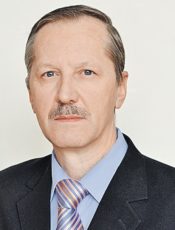Trying to distort the results of WW II, revenge seekers in Japan hope that people's memory will fail them. A series of court hearings took place in Russia's Far Eastern city of Khabarovsk between the 25th -31st of December, 1949, to try twelve members of the Japanese Kwantung Army as war criminals for manufacturing and using biological weapons in 1938-1945 in China.
The Khabarovsk trials did not draw as much response as the Tokyo War Crimes Trial which had been held a year before. The case of the former Kwantung army officers was considered by a war crimes tribunal of the Primorsk military district, and probably this is why very few people remember it nowadays. But this is the case worth paying our attention to since present-day Japanese politicians have inherited the ideology of appropriating somebody else's territories.
Twelve former members of the Japanese army were in the dock: General Otozo Yamada, former commander-in-chief of the Kwantung Army; Lt-General Kajitsuka Ryuji, former chief of medical administration; Lt-General Takahashi Takaatsu, former chief of the veterinary service; Major General Kawashima Kiyoshi, former chief of Unit 731 biological and chemical warfare research unit; Major General Sato Shunji, former chief of medical service, 5th army, as well as several other high-ranking army officials.
A war crimes tribunal that was dealing with that case knew that not only those twelve defendants were guilty of unleashing a bacteriological war. But the US authorities that were occupying Japanese islands at the time did not want to cooperate with the Soviet court and harboured many other war criminals.
Ishii Shiro, a microbiologist and Lt General of Unit 731, was one of them. According to the court, it was he who had come up with the idea of a bacteriological war. Since 1936 Shiro was heading a secret department for manufacturing chemical and biological warfare.
Two military units, number 731 (near Harbin) and number 100 (near Changchun) were formed on the territory of Manchuria that was occupied by the Japanese Kwantung Army. Those units were responsible for producing deadly bacteria and developing biological war strategy.
Unit 731 comprised 3,000 people. It was a kind of factory for producing plague-contaminated fleas (up to 300 kg per month). Unit 100 was responsible for spreading disease among cattle.
Ishii continued his experiments using bioweapons. He conducted field tests of germ warfare agents, and tried various methods of dispersion (via firearms, bombs, e.t.c.). His unit kept mice, rats which were used as sources of contamination.
But those secret units dealt not only with laboratory tests, they also conducted experiments directly during battles. At least three cases of massive use of biological warfare in 1940-1942 in Central China which causedepidemic plague and typhus outbreaks.
The two units tested their weapons on humans, mainly Chinese, Manchurian and Russian prisoners. Major General Kawashima Kiyoshi testified that 'at least 600 people died during the experiments each year'. He also said that if a prisoner was lucky to recover after deliberate contamination, he would be used in further experiments until he died.
At least 3,000 people were killed in gas cameras when the two units conducted their chemical tests.
Guilt was admitted by eleven defendants, while Lt-General Kajitsuka Ryuji admitted the charges partially. Some of the accused tried to justify themselves by saying that they were just fulfilling their superiors` orders.
At the time death penalty was abolished in the Soviet Union, four Generals were sentenced to 25 years in prison, while the rest faced between two and twenty years. In 1956, under Nikita Khrushchev, those defendants who were still serving their prison terms, were amnestied.
However, Soviet authorities were aware that many Japanese war criminals managed to escape punishment. Nobody knows what could have happened if the Soviet Army would not have launched its offensive in August of 1945. But since turning a blind eye on Japan`s barbarian policy could have led to new tragedies, Soviet ambassadors in Washington, London and Beijing addressed the governments of the US, Great Britain and China on taking joint measures to find and punish the masterminds behind those barbarian crimes. The names of Japanese Emperor Hirohito, General Ishii Shiro, Lt General Kitano Masadzo and some other high-ranking army officials harbored by the US were on the wanted list. Moscow came up with an idea of starting a new series of international court hearings on the case. Copies of notifications were also delivered to Australia, Burma, Holland, India, Canada, New Zealand, Pakistan and France.
But the initiative was not widely supported. The Americans received from Japan secret data on biological warfare and responded with guaranteed immunity from prosecution. At the end of 1949 a commission for early release supervised by US Gen Douglas MacArthur started the release of prisoners.
Half a century has passed, and having abandoned all commitments it took at the Crimea Conference and documented in a three-party deal on the Far East issues (from February 11, 1945), as well as in other landmark documents signed followingthe end of WW II, the US decided to support Japan in its territorial claims to Russia.
According to an official spokesman for the Russian Foreign Ministry Alexander Lukashevich, all attempts by the US authorities to meddle into the Russia-Japan territorial dispute are inadmissible.
The mere intention to revise the outcome of WW II presents a serious threat to the world. And the threat becomes even bigger when this intention is backed by a state which once was a member of the anti-Hitler coalition.









